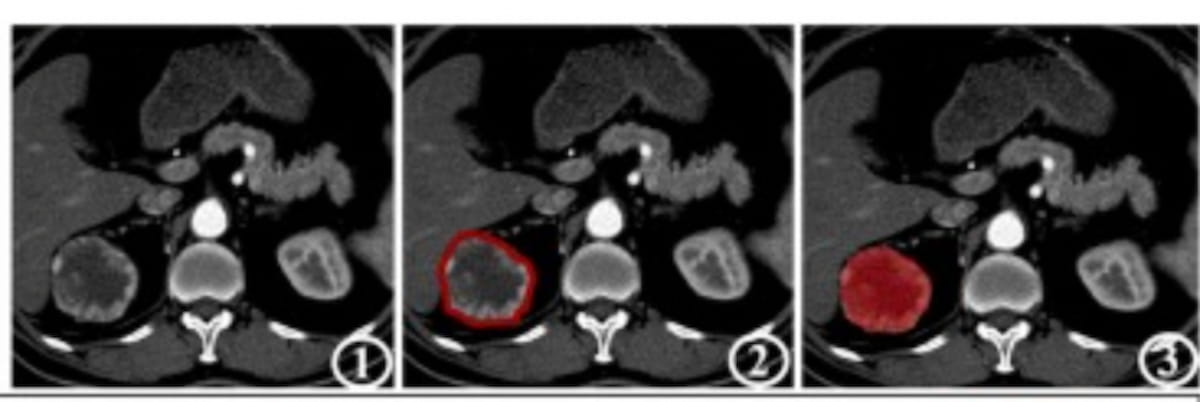For patients with non-metastatic clear cell renal cell carcinoma (ccRCC), new multicenter research suggests that radiomics-based machine learning assessment of computed tomography (CT) scans offers greater prognostic accuracy than a clinical factor model in predicting five-year recurrence-free survival (RFS).
For the multicenter retrospective study, which was recently published in Academic Radiology, researchers developed and compared five CT radiomics-based machine learning models as well as a clinical model in a total cohort of 559 patients with non-metastatic ccRCC. In additional to a primary data set with 271 patients, the study authors evaluated the radiomic machine learning models with two external validation cohorts of 216 patients and 72 patients respectively.
All five CT-based radiomic machine learning models provided improved area under the receiver operating characteristic curves (AUC) than the clinical model for predicting five-year recurrence-free survival (RFS) in patients with ccRCC.
The highest performing radiomic machine learning model was the random forest (RF) model, which offered a greater than 10 percent increase in the AUC in comparison to the clinical model in both external validation cohorts (82.6 and 79.9 percent vs. 71.8 and 68.5 percent), according to the researchers.
“Our study may facilitate the application of artificial intelligence predictors in the preoperative recurrence prediction of non-metastasis ccRCC patients, thereby assisting the clinical management,” wrote lead author Jia Zhang, M.D., who is affiliated with the Department of Geriatrics at the First Affiliated Hospital of Chongqing Medical University in Chongqing, China, and colleagues.
Employing the SHapley Additive exPlanations (SHAP) model to assess different features of the RF radiomic machine learning model, the researchers found that the Rad-Score, generated through the filtering of 13 radiomic features, was the most significant contributing factor. In addition to having a mean SHAP value of 0.15, the Rad-Score provided AUCs for 5-year RFS that ranged from 73.4 to 83.6 percent.
Three Key Takeaways
1. Radiomics-based machine learning outperforms clinical models. Radiomics-based machine learning (ML) models using CT scans demonstrated significantly greater accuracy in predicting five-year recurrence-free survival (RFS) for patients with non-metastatic clear cell renal cell carcinoma (ccRCC) compared to traditional clinical factor models.
2. Random forest model shows highest accuracy. Among the ML models tested, the Random Forest (RF) model achieved the best performance, improving AUCs by over 10 percent relative to the clinical model in external validation cohorts (82.6 percent and 79.9 percent vs. 71.8 percent and 68.5 percent).
3. Rad-Score is a key prognostic indicator. The SHAP analysis revealed that the Rad-Score, derived from 13 radiomic features, was the most impactful predictor within the RF model, followed by tumor size and patient age, suggesting strong potential for personalized risk stratification.
The next highest contributing factors in the RF model included tumor size and age with SHAP values of 0.03 for each, according to the study authors.
“Our findings indicate that each factor had a positive effect, which further corroborates the underlying rationale for the superior performance of the RF model. Moreover, these results provide compelling evidence that the RF model can be effectively utilized in clinical practice,” noted Zhang and colleagues.
(Editor’s note: For related content, see “Study for Emerging PET/CT Agent Reveals ‘New Standard’ for Detecting Clear Cell Renal Cell Carcinoma,” “CT-Based Radiomic Model Shows Promise for Pre-Op Staging of Clear Cell Renal Cell Carcinoma” and “Meta-Analysis Assesses Impact of PSMA PET/CT for Staging of Renal Cell Carcinoma.”)
In regard to study limitations, the authors noted the retrospective nature of the research, manual delineation of renal tumor regions and not incorporating pathological whole slide images for the study.
